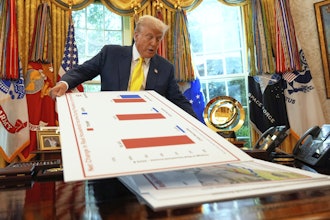WASHINGTON (AP) -- U.S. retail sales declined in April and May, pulled down by a sharp drop in gas prices. But even after excluding volatile gas sales, consumers barely increased their spending.
The Commerce Department said Wednesday that retail sales dipped 0.2 percent in May. That followed a revised 0.2 percent decline April. The back-to-back declines were the first in two years.
The weakness reflected a 2.2 percent plunge in gasoline station sales. Still, excluding gas station sales, retail spending rose just 0.1 percent in May. And it dropped 0.1 percent in April. That left retail spending roughly flat outside of gas sales for the two months, a sign that slower job growth and paltry wage increases may be leading consumers to pull back on spending.
Americans did spend more in May on big purchases. Sales of cars, furniture and appliances all increased. That suggests consumers may be gaining more confidence in the economy.
And lower gas prices could give consumers more to spend in the coming months on restaurant meals, clothes, appliances and other discretionary purchases that drive growth.
Gas prices have tumbled since peaking on April 6. On Tuesday, the average nationally price for a gallon of gas averaged $3.54, according to AAA. That's down 19 cents from a month earlier.
Total retail sales fell in April to $404.6 billion. That's slightly below March's record level of $406.2 billion and 21.6 percent higher than the recession low hit in March 2009.
The retail sales report is the government's first look at consumer spending, which drives 70 percent of economic activity.
But economists are worried that consumer spending may weaken if income growth does not revive.
Workers' average hourly earnings have risen just 1.7 percent in the 12 months ended in May. That's well below the pace of inflation during this period.
And job growth has slowed since the start of the year. Employers added 226,000 jobs on average during the first three months of the year; they have added an average of 73,000 jobs a month since April.
If job growth does not revive, that could act as a drag on consumer spending in coming months.
In the January-March quarter, overall economic growth slowed to an annual rate of 1.9 percent, down from a 3 percent rate of increase in the October-December period.
The strength in the first three months of this year was led by the fastest growth in consumer spending in more than a year.






















